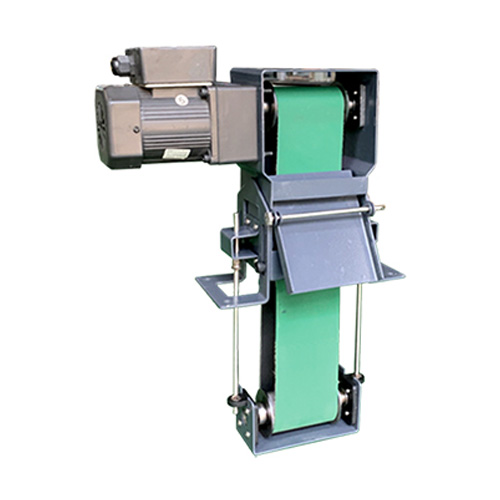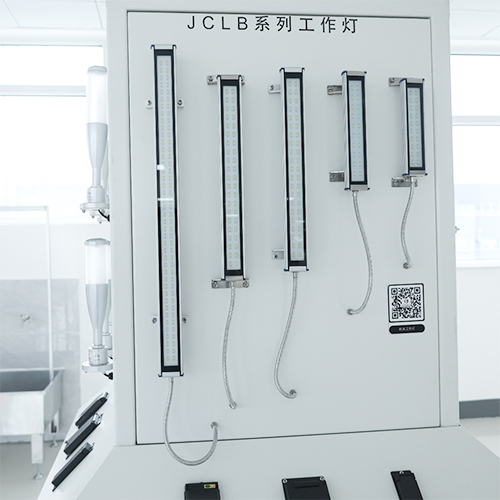-
WhatsAPP: +86 18706448138
-
Tengzhou, Shandong, China

How to Choose the Best Machine Shop Work Lights
Choosing the right machine shop work lights involves understanding the specific needs of your workspace, including brightness, durability.
Table of Contents
Introduction

In any machine shop, proper lighting is essential for ensuring precision, safety, and efficiency. Machine shop work lights play a critical role in illuminating workspaces, enabling machinists to perform intricate tasks with accuracy. Poor lighting can lead to errors, reduced productivity, and even safety hazards. Choosing the right machine shop work lights involves understanding the specific needs of your workspace, including brightness, durability, and energy efficiency. This guide will walk you through the key factors to consider when selecting the best lighting solutions for your machine shop, ensuring optimal performance and a well-lit environment.
Why Lighting Matters in a Machine Shop
Lighting in a machine shop is more than just a convenience; it directly impacts the quality of work and the safety of employees. Inadequate lighting can cause eye strain, fatigue, and mistakes during complex machining processes. Machine shop work lights are designed to provide focused, high-quality illumination to highlight fine details, reduce shadows, and create a safe working environment. By investing in the right lighting, shop owners can improve worker productivity, minimize errors, and maintain a safer workspace. Understanding the importance of lighting is the first step toward making an informed decision.
The Role of Machine Shop Work Lights in Precision Work
Precision is at the heart of every machine shop operation. Whether you’re milling, turning, or grinding, machine shop work lights help illuminate small components and intricate details. Bright, well-positioned lights reduce the risk of errors by ensuring machinists can clearly see their workpieces. Adjustable lighting options allow workers to direct light exactly where it’s needed, enhancing visibility for tasks requiring high accuracy.
Enhancing Safety with Proper Lighting
Safety is a top priority in machine shops, where heavy machinery and sharp tools are in constant use. Machine shop work lights contribute to a safer workplace by reducing the likelihood of accidents caused by poor visibility. Well-lit work areas help machinists avoid mistakes that could lead to equipment damage or personal injury. Additionally, proper lighting reduces eye strain, which can cause fatigue and increase the risk of errors over long shifts.
Key Features to Look for in Machine Shop Work Lights

When selecting machine shop work lights, several features should guide your decision. These include brightness, durability, energy efficiency, and flexibility. By focusing on these aspects, you can ensure the lights meet the demands of your shop’s unique environment.
Brightness and Lumens
The brightness of machine shop work lights is measured in lumens, which indicates the amount of light emitted. For machine shops, lights with higher lumens (typically 500–2,000 lumens per light) are ideal for illuminating detailed tasks. Consider the size of your workspace and the type of work being performed to determine the appropriate brightness level. For instance, larger shops or tasks requiring extreme precision may need lights with higher lumen output.
Durability and Build Quality
Machine shops are harsh environments, with exposure to dust, debris, and vibrations. Machine shop work lights must be built to withstand these conditions. Look for lights with robust housing, such as aluminum or stainless steel, and those with an IP (Ingress Protection) rating, such as IP65 or higher, to ensure resistance to dust and water. Durable lights reduce maintenance costs and ensure long-term reliability.
Energy Efficiency
Energy-efficient machine shop work lights, such as LED models, can significantly reduce operational costs. LEDs consume less power than traditional halogen or fluorescent lights while providing bright, consistent illumination. Choosing energy-efficient lights not only lowers electricity bills but also aligns with sustainable practices, making them a smart choice for modern machine shops.
Flexibility and Adjustability
Flexibility is another critical factor. Machine shop work lights with adjustable arms, pivoting heads, or magnetic bases allow machinists to direct light precisely where it’s needed. This adaptability is especially useful for shops handling a variety of tasks, as it ensures optimal lighting for different workstations and projects.
Types of Machine Shop Work Lights
There are several types of machine shop work lights, each suited to different applications. Understanding the options available will help you choose the best fit for your shop’s needs.
LED Work Lights
LED machine shop work lights are among the most popular due to their energy efficiency, long lifespan, and bright output. They produce minimal heat, making them safe for prolonged use in close proximity to machinery. LEDs are also available in various color temperatures, allowing you to choose a light that mimics natural daylight for better visibility.
Fluorescent Work Lights
Fluorescent lights are a traditional choice for machine shops, offering widespread illumination at a lower cost. However, they are less energy-efficient than LEDs and may require more frequent replacement. They are best suited for general lighting rather than task-specific illumination.
Halogen Work Lights
Halogen lights provide bright, warm light but consume more energy and generate significant heat. While they can be effective for certain applications, their higher operating costs and shorter lifespan make them less practical for most modern machine shops compared to LEDs.
Task-Specific Work Lights
Some machine shop work lights are designed for specific tasks, such as magnifying lights for inspecting small parts or articulating arm lights for precise positioning. These specialized lights are ideal for shops with diverse machining needs.
Comparing Key Specifications of Machine Shop Work Lights
To help you evaluate different machine shop work lights, the following table outlines key specifications to consider when making your choice. This comparison focuses on general features rather than specific brands to provide a clear, unbiased overview.
| Feature | Description | Importance in Machine Shops |
|---|---|---|
| Brightness (Lumens) | Measures light output; higher lumens for detailed tasks | Ensures clear visibility for precision work |
| Color Temperature | Ranges from warm (2700K) to cool (5000K+); cooler light mimics daylight | Affects visibility and reduces eye strain |
| IP Rating | Indicates dust and water resistance (e.g., IP65) | Ensures durability in harsh shop environments |
| Energy Efficiency | Measured by wattage; LEDs are most efficient | Reduces operational costs |
| Adjustability | Ability to reposition or angle the light | Allows precise lighting for various tasks |
| Lifespan | Average hours of operation (e.g., LEDs last 50,000+ hours) | Impacts long-term maintenance costs |
| Mounting Options | Includes magnetic bases, clamps, or fixed mounts | Facilitates easy installation and repositioning |
This table serves as a quick reference to prioritize features based on your shop’s specific requirements.
How to Assess Your Machine Shop’s Lighting Needs

Before purchasing machine shop work lights, evaluate your shop’s unique needs. Consider factors such as the size of the workspace, the types of tasks performed, and the existing lighting conditions. Conducting a lighting audit can help identify areas where illumination is insufficient or where shadows interfere with work.
Evaluating Workspace Size
Larger machine shops may require multiple light sources to ensure even illumination across all workstations. Measure the square footage of your shop and calculate the total lumen output needed to achieve adequate brightness. A general rule is 50–100 lumens per square foot for machine shop environments.
Identifying Task-Specific Requirements
Different machining tasks require varying levels of light intensity. For example, tasks like CNC machining or quality inspection demand brighter, more focused lighting, while general assembly areas may need softer, more diffuse light. Tailor your lighting choices to the specific tasks performed in each area of the shop.
Considering Existing Lighting Conditions
Assess the natural and existing artificial lighting in your shop. If your workspace has large windows, you may need fewer artificial lights during the day but should plan for consistent lighting during evening shifts or in areas with limited natural light. Machine shop work lights should complement existing lighting to create a balanced environment.
Installation Tips for Machine Shop Work Lights
Proper installation is key to maximizing the effectiveness of machine shop work lights. Incorrect placement or mounting can lead to shadows, glare, or insufficient coverage.
Optimal Placement for Maximum Coverage
Position lights to minimize shadows and ensure even illumination. Overhead lights are ideal for general lighting, while task-specific lights should be placed close to workstations. Avoid placing lights directly above machinery, as this can create glare or reflections on metal surfaces.
Choosing the Right Mounting Options
Machine shop work lights come with various mounting options, such as magnetic bases, clamps, or fixed brackets. Magnetic mounts are particularly useful for temporary setups or repositioning, while fixed mounts are better for permanent installations. Choose a mounting option that aligns with your shop’s layout and workflow.
Wiring and Power Considerations
Ensure your shop’s electrical system can support the power requirements of your chosen lights. For large installations, consult an electrician to verify that wiring is safe and compliant with local regulations. If using portable lights, consider models with long cords or battery-powered options for flexibility.
Maintenance and Care for Machine Shop Work Lights
To ensure the longevity of your machine shop work lights, regular maintenance is essential. Proper care can extend the lifespan of your lights and maintain consistent performance.
Cleaning and Dust Management
Dust and debris are common in machine shops and can accumulate on light fixtures, reducing their brightness. Regularly clean lights with a soft cloth and non-abrasive cleaner to maintain optimal performance. For lights with high IP ratings, ensure seals remain intact to prevent dust ingress.
Replacing Bulbs and Components
Even long-lasting LED machine shop work lights may eventually require bulb or component replacement. Keep spare parts on hand to minimize downtime. Check manufacturer specifications for compatible replacements and follow proper installation procedures.
Inspecting for Wear and Tear
Regularly inspect lights for signs of damage, such as cracked lenses or loose mounts. Address issues promptly to prevent safety hazards or reduced performance. For shops with heavy vibrations, ensure lights are securely mounted to avoid loosening over time.
Cost Considerations for Machine Shop Work Lights

The cost of machine shop work lights varies depending on features, quality, and quantity. While it may be tempting to opt for cheaper options, investing in high-quality lights can save money in the long run through reduced energy costs and maintenance.
Balancing Upfront Costs and Long-Term Savings
High-quality LED machine shop work lights may have a higher initial cost but offer significant savings over time due to their energy efficiency and long lifespan. Calculate the total cost of ownership, including energy consumption and replacement frequency, to make an informed decision.
Budgeting for Multiple Lights
For larger shops, purchasing multiple lights may be necessary to achieve adequate coverage. Create a budget that accounts for the number of lights needed, installation costs, and ongoing maintenance. Consider bulk discounts or package deals from reputable suppliers.
Conclusion
Choosing the right machine shop work lights is a critical decision that impacts productivity, safety, and efficiency. By focusing on key features like brightness, durability, and energy efficiency, you can select lights that meet your shop’s specific needs. Whether you opt for LED, fluorescent, or task-specific lights, ensure they are installed and maintained properly to maximize their benefits. For the best selection and expert guidance, contact us today to explore our range of high-quality machine shop work lights and elevate your workspace.
FAQ
What is the ideal brightness for machine shop work lights?
The ideal brightness depends on the task, but 1,000–2,000 lumens is suitable for general machine shop tasks, while precision work may require 3,000 lumens or more.
Are LED machine shop work lights worth the investment?
Yes, LEDs are energy-efficient, long-lasting, and produce minimal heat, making them a cost-effective and practical choice for machine shops.
How do I reduce glare from machine shop work lights?
Use diffusers, adjustable lights, or anti-glare coatings to minimize glare. Positioning lights strategically also helps reduce reflections on shiny surfaces.


